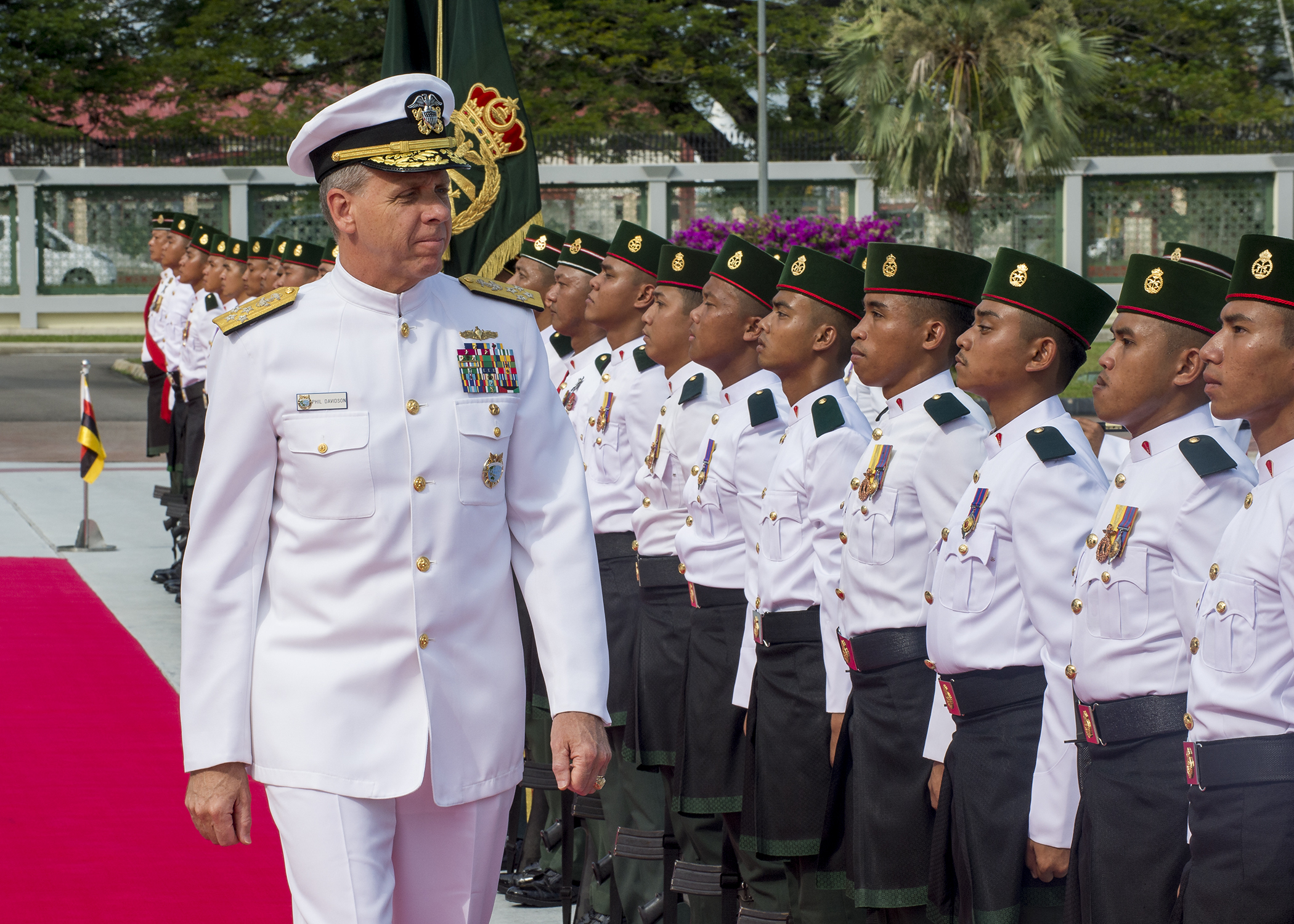
U.S. Indo-Pacific Command’s priorities are paving the way for it to pursue goals laid out in the Navy’s new Navigation Plan, the combatant command’s chief said Tuesday.
Speaking at the Surface Navy Association’s annual symposium, Adm. Phil Davidson pointed to the capabilities he is concentrating on for the theater when asked how INDOPACOM will attain the objectives in the chief of naval operation’s new strategic blueprint.
“I’ve articulated some of the capability sets that we need out here when we talk about lethality, when we talk about our design and posture. When we talk about our relationships with allies and partners. And when we talk about what has to get accomplished in exercise, experimentation and innovation,” Davidson said.
“Those are all elements that will help serve that modernization vision that the CNO started to articulate going forward. And, as I mentioned, demonstrate the capability, capacity and will for us to compete and win going forward. The very difficult challenge – and I hope everybody takes this away from everybody’s comments – is getting from here to there, right. You don’t have the ability to define some ideal end state and say ‘we need to get there at the snap of a finger,’ right.”
The head of INDOPACOM was referencing “focus areas” he detailed in a document to Congress last year that argues for his combatant command’s investment priorities, which include long-range precision fires and a homeland missile defense system for Guam.
Davidson’s remarks come a day after Chief of Naval Operations Adm. Mike Gilday formally unveiled his CNO Navigation Plan, a strategic document that describes how the service will develop a lethal and distributed fleet prepared for conflict in the Indo-Pacific region against a country like China or Russia.
“I don’t mean to be dramatic, but I feel like if the Navy loses its head, if we go off course and really take our eyes off those things we need to focus on with respect to readiness capabilities, capacity, and sailors — I think we may not be able to recover in this century based on the trajectory that the Chinese are on right now,” Gilday told reporters last week.
Davidson cited several capabilities, like the offensive employment of the Standard Missile-6, that are helping to facilitate the transition from where the joint force is now to the type of force it needs to become for future operations.
“The production and testing [of] Maritime Strike Tomahawk is another example. [The] testing of unmanned systems, desire to bring MQ-25 to the air wing. You know, extend its organic capability and preserve the capability to have some sensing in that platform, things like that. All those things are taking us on that journey going forward,” he said.
Noting that the goals and transition to a different kind of force are difficult, Davidson argued the Navy rapidly pivoted before, pointing to changes the service made after Sept. 11, 2001 to fight land wars in Iraq and Afghanistan.
“It was just a dozen years ago that we had more people on the ground in Iraq and Afghanistan than we have submariners in the submarine force in the United States Navy,” he said.
“That’s how quickly you can make things happen if you’re getting all those functions across the whole of the enterprise working to do it.”
Davidson has been advocating for a host of capabilities in his area of responsibility that are meant to counter China. The INDOPACOM chief’s investment priorities for Fiscal Year 2022 to FY 2026 led lawmakers to include a provision in the 2021 National Defense Authorization Act that created a Pacific Deterrence Initiative, akin to the European Deterrence Initiative.
According to the text of the FY 2021 NDAA, the initiative will “carry out prioritized activities to enhance the United States deterrence and defense posture in the Indo-Pacific region, assure allies and partners, and increase capability and readiness in the Indo-Pacific region.”
During his remarks at SNA, Davidson sounded the alarm on China’s actions in the Indo-Pacific and the need for the U.S. to pursue a deterrence strategy in the region.
“Without an effective conventional deterrent, China will be emboldened to take action or limit access to the vital seas and airways in the region and threaten or coerce the sovereignty of its neighbors – hence the need to implement an effective deterrence strategy for competition,” Davidson said.
“In doing so, we must achieve an advantageous security environment by again, demonstrating the capability, the capacity, and the will to deny China’s objectives, and if necessary, to impose costs.”





